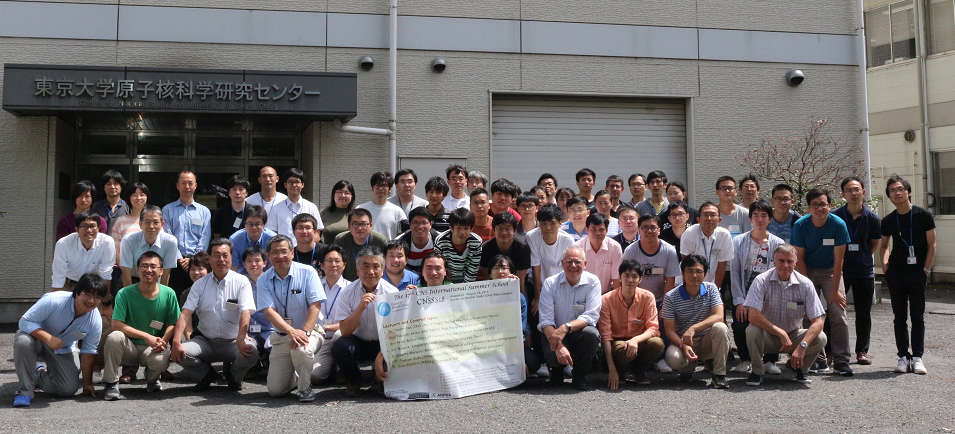Atomic nuclei are self-bound quantum many-body systems that consist of protons and neutrons, and protons and neutrons interact with each other by the nuclear and electromagnetic forces. In nuclear physics, the study of the nuclear force is still one of the most important topics, since the exact form of the nuclear force is still unknown [1]. It is known that nuclear force has almost the isospin symmetry, i.e., the nuclear force between protons and that between neutrons are almost the same [2] and the study of isospin symmetry breaking of the nuclear force is important to understand the nuclear force itself [3]. Although the contribution of the nuclear force for the binding energy is much larger than that of the electromagnetic force, in order to understand isospin symmetry breaking of the nuclear force, it is important to study the electromagnetic contribution, for example for the mirror nuclei mass difference [4] and the isospin symmetry-breaking correction to superallowed $\beta$ decay [5, 6], which are caused only by the electromagnetic force if the nuclear force has full isospin symmetry.
The density functional theory (DFT) in principle gives the exact ground-state energy as a functional of the charge density [7, 8]. The accuracy of DFT depends only on the accuracy of the energy density functional (EDF). High-accuracy non-empirical EDFs for electron systems have been proposed for decades, although a systematic way of deriving the exact EDF is still an open problem [9, 10]. The ground-state energy of atomic nuclei in DFT is $ E_{\mathrm{\scriptstyle{gs}}} = T_0 \left[ \rho_{\mathrm{\scriptstyle{gs}}} \right] + E_{\mathrm{\scriptstyle{Ch}}} \left[ \rho_{\mathrm{\scriptstyle{gs}}} \right] + E_{\mathrm{\scriptstyle{Cx}}} \left[ \rho_{\mathrm{\scriptstyle{gs}}} \right] + E_{\mathrm{\scriptstyle{nucl}}} \left[\rho_{\mathrm{\scriptstyle{gs}}} \right] $, where $ T_0 $ is the kinetic energy of the non-interacting reference system and $ E_{\mathrm{\scriptstyle{ch}}} $, $ E_{\mathrm{\scriptstyle{Cx}}} $, and $ E_{\mathrm{\scriptstyle{nucl}}} $ are the Coulomb Hartree, Coulomb exchange, and nuclear terms, respectively [11]. It in principle allows high-accuracy evaluation of such electromagnetic contributions. However, so far the widely used scheme is the Hartree-Fock-Slater or Hartree approximations in nuclear physics [12].
Recently, we examined whether the exchange and correlation EDFs developed for the electron systems is applicable to atomic nuclei [13]. Both the local density approximation (LDA) and generalized gradient approximation (GGA) functionals were investigated. We employed the experimental charge-density distributions $ \rho_{\mathrm{\scriptstyle{ch}}} $ [14] of the selected nuclei as inputs of ground-state density distributions. For the exchange Coulomb energies, it is found that the deviation between the LDA and GGA, $
\Delta E_{\mathrm{\scriptstyle{x}}}
=
\left(
E_{\mathrm{\scriptstyle{x}}}^{\mathrm{\scriptstyle{GGA}}} - E_{\mathrm{\scriptstyle{x}}}^{\mathrm{\scriptstyle{LDA}}} \right)/
E_{\mathrm{\scriptstyle{x}}}^{\mathrm{\scriptstyle{GGA}}}
$ ranges from around $ 11 \, \% $ in $ {}^{4} \mathrm{He} $ to around $ 2.2 \, \% $ in $ {}^{208} \mathrm{Pb} $, with the GGA-PBE functional [15] for example. From light to heavy nuclei, it is seen that $ \Delta E_{\mathrm{\scriptstyle{x}}} $ behaves in a very similar way as the deviation between the Hartree-Fock-Slater approximation and the exact Hartree-Fock calculation given by Le Bloas et al. [16]. In this sense, the GGA exchange functionals of electron systems can be applied in a straightforward manner with practical accuracy to atomic nuclei. In contrast, the correlation Coulomb energy density functionals of electron systems are not applicable for atomic nuclei, because correlation effects caused from the Coulomb force and from the nuclear force are not separable and the nuclear interaction determines the properties of atomic nuclei. The self-consistent calculation of the Kohn-Sham equation with the PBE exchange energy density functional was also tested [17]. In most cases, once one of the PBE-functional coefficient $ \mu $ is changed to $ 1.25 \mu $, the PBE exchange functional successfully reproduces the exact-Fock Coulomb energy. This fact is remarkable since the numerical cost of GGA is $ O \left( N^3 \right) $, whereas that cost of exact Hartree-Fock approximation is $ O \left( N^4 \right) $ for the self-consistent calculations.
References
[1] N. Ishii, S. Aoki, and T. Hatsuda. Phys. Rev. Lett. 99, 022001 (2007).
[2] E. Wigner. Phys. Rev. 51, 106 (1937).
[3] X. Roca-Maza, G. Colò, and H. Sagawa. Phys. Rev. Lett. 120, 202501 (2018).
[4] J. A. Nolen, Jr. and J. P. Schiffer. Annu. Rev. Nucl. Sci. 19, 471 (1969).
[5] H. Liang, N. Van Giai, and J. Meng. Phys. Rev. C 79, 064316 (2009).
[6] J. C. Hardy and I. S. Towner. Phys. Rev. C 91, 025501 (2015).
[7] P. Hohenberg and W. Kohn. Phys. Rev. 136, B864 (1964).
[8] W. Kohn and L. J. Sham. Phys. Rev. 140, A1133 (1965).
[9] J. P. Perdew and K. Schmidt. AIP Conf. Proc. 577, 1 (2001).
[10] H. Liang, Y. Niu, and T. Hatsuda. Phys. Lett. B 779, 436 (2018).
[11] T. Nakatsukasa, K. Matsuyanagi, M. Matsuo, and K. Yabana. Rev. Mod. Phys. 88, 045004 (2016).
[12] M. Bender, P.-H. Heenen, and P.-G. Reinhard. Rev. Mod. Phys. 75, 121 (2003).
[13] T. Naito, R. Akashi, and H. Liang. Phys. Rev. C 97, 044319 (2018).
[14] H. De Vries, C. W. De Jager, and C. De Vries. At. Data Nucl. Data Tables 36, 495 (1987).
[15] J. P. Perdew, K. Burke, and M. Ernzerhof. Phys. Rev. Lett. 77, 3865 (1996).
[16] J. Le Bloas, M.-H. Koh, P. Quentin, L. Bonneau, and J. I. A. Ithnin. Phys. Rev. C 84, 014310 (2011).
[17] T. Naito, X. Roca-Maza, G. Colò, and H. Liang. In Progress.
 The 17th CNS International Summer School will be held on Augst 22nd to 28th, 2018 at Nishina-hall of RIBF. The school is hosted by the CNS, University of Tokyo and supported by RIKEN Nishina Center and cooperated by ANPhA.
The 17th CNS International Summer School will be held on Augst 22nd to 28th, 2018 at Nishina-hall of RIBF. The school is hosted by the CNS, University of Tokyo and supported by RIKEN Nishina Center and cooperated by ANPhA.